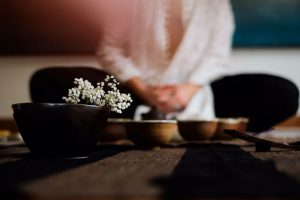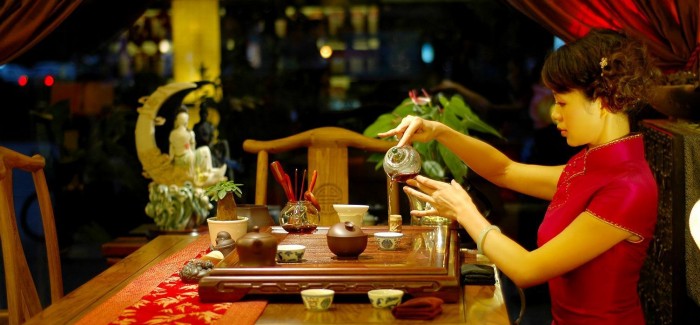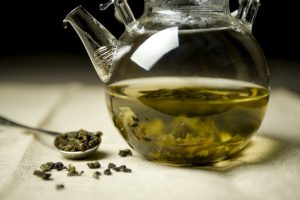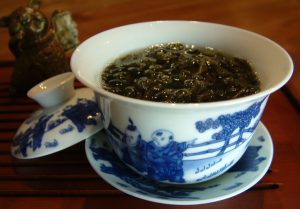Chinese Tea Culture
China is the homeland of tea. Wild tea trees from over 3,000 years ago, where tea was once farmed, and extant cultivated tea areas dating back to 800 years ago, can still be found in Southwest China.
At present more than forty countries in the world grow tea with Asian countries producing 90% of the world’s total output. All tea trees in other countries have their origin directly or indirectly in China. The word for tea leaves or tea as a drink in many countries are derivatives from the Chinese character 茶 “cha”.
Among the three major beverages of the world – tea, coffee and cocoa – tea is consumed by the largest number of people in the world.
The Legend

In one popular Chinese legend, Shennong, the legendary Emperor of China and inventor of agriculture and Chinese medicine was drinking a bowl of just boiled water. Dried leaves from a nearby bush fell into the boiling water, and a brown substance was infused into the water. As a scientist, the Emperor was interested in the new liquid, drank some, and was pleasantly surprised by its flavor and restorative properties. And so, according to Chinese legend, tea was created in 2737 BC.
For the Chinese, tea drinking and tasting are not the same.
Tea drinking is for refreshment and tonic effect.
Tea tasting has cultural meaning. Tea and tea wares should match surrounding elements such as breeze, bright moon, pines, bamboo, plums and snow.  All these show the ultimate goal of Chinese culture: the harmonious unity of human beings with nature.
All these show the ultimate goal of Chinese culture: the harmonious unity of human beings with nature.
Tea is compared to personal character. Its fragrance is not aggressive; it is pleasant, low-keyed and lasting. A friendship between gentlemen is also like a cup of tea. With a cup of tea in hand, enjoying the green leaves in a white porcelain cup, you will feel peace. Fame, wealth and other earthly concerns are far away. It is the symbol of elegance.
The tea culture reflects the oriental traditional culture, combining the tea with Tao wisdom, pronounced in Chinese as Dao, which is an integral part of the Chinese culture. The Dao of tea stresses the fact of being harmonious, quiet, optimistic and authentic. Peace of mind being the first step to get to tranquillity as a spiritual purpose in order to combine harmony and serenity. The idea is that as long as a person keeps quiet inside, she can always take advantage of the enjoyment of the conversation, of laughter, of the music and the opera.
The Dao of tea stresses the fact of being harmonious, quiet, optimistic and authentic. Peace of mind being the first step to get to tranquillity as a spiritual purpose in order to combine harmony and serenity. The idea is that as long as a person keeps quiet inside, she can always take advantage of the enjoyment of the conversation, of laughter, of the music and the opera.
Ones would say that the tea culture is a kind of intermediate culture which allows to pass on the spirit of the Chinese traditional culture to the future generations.
A famous tea drinker in China’s Tang Dynasty told tea had ten virtues: melting away depression, dissolving lethargy, encouraging liveliness, breaking up illness, bringing virtue and courtesy, expressing respect, making a distinction between different tastes, nurturing the body, practicing Dao, and improving one’s aspirations.
Tea Ceremony
Chinese tea ceremony conform with the wisdom of oriental philosophy. Furthermore, Chinese tea ceremony reflects the central idea of Taoism, Confucian and Buddhism. That is, the peace.
“The way of tea”, Chinese tea ceremony is not only to drink tea but also to learn and understand the traditional Chinese culture. Therefore, the tea ceremony is the core of Chinese tea culture. By preparing and drinking tea, the tea masters show their personal thoughts and spiritual world. 
There are three distinctive features of Chinese tea ceremony. First of all, from the way you practice tea ceremony, you show us what kind of person you are, your manners, personality, aesthetic view point, and even inner world. Secondly, Chinese tea ceremony requires peace and pureness. Thirdly, the tea ceremony in China calls for authenticity. The fine tea comes with the spring water, the natural environment, the authentic bamboo or wood tools, and the porcelain tea sets.
The different ways of brewing Chinese tea depend on variables like the formality of the occasion, the means of the people preparing it, and the kind of tea being brewed. For example, green teas are more delicate than oolong teas or black teas; therefore, green tea should be brewed with cooler water.
The most informal method of brewing tea is to simply add the leaves to a pot containing hot water. This method is commonly found in households and restaurants. Another method for serving tea is to use a small lidded bowl called a Gaiwan.
Another method for serving tea is to use a small lidded bowl called a Gaiwan. 
